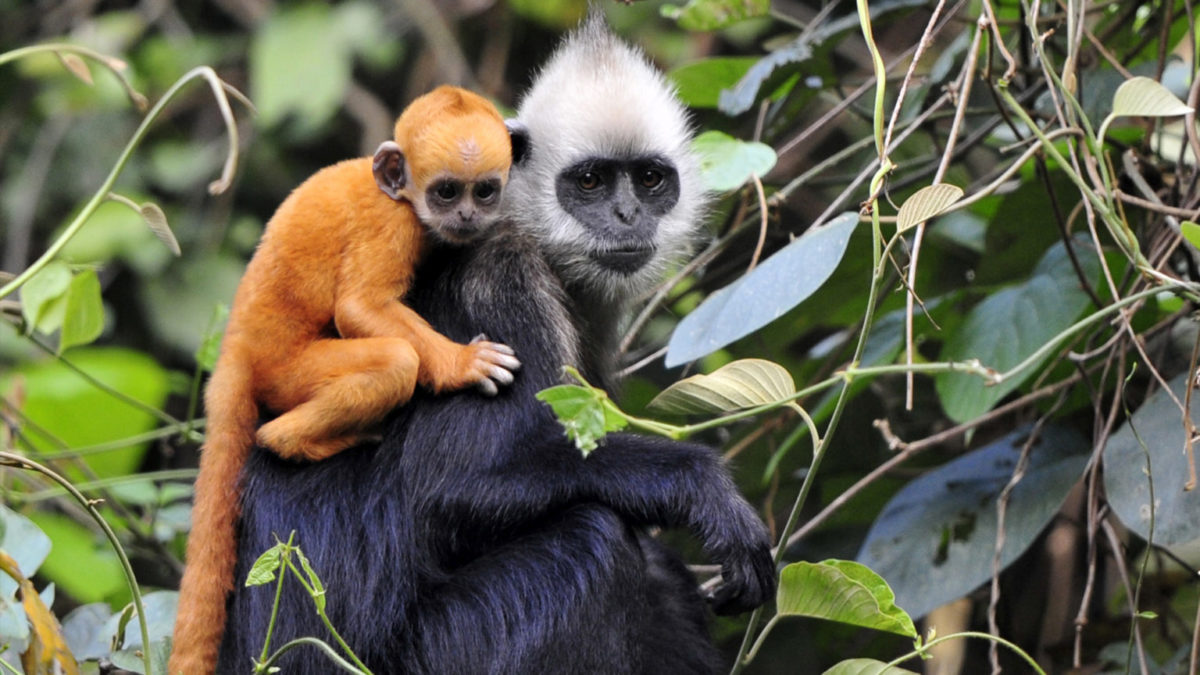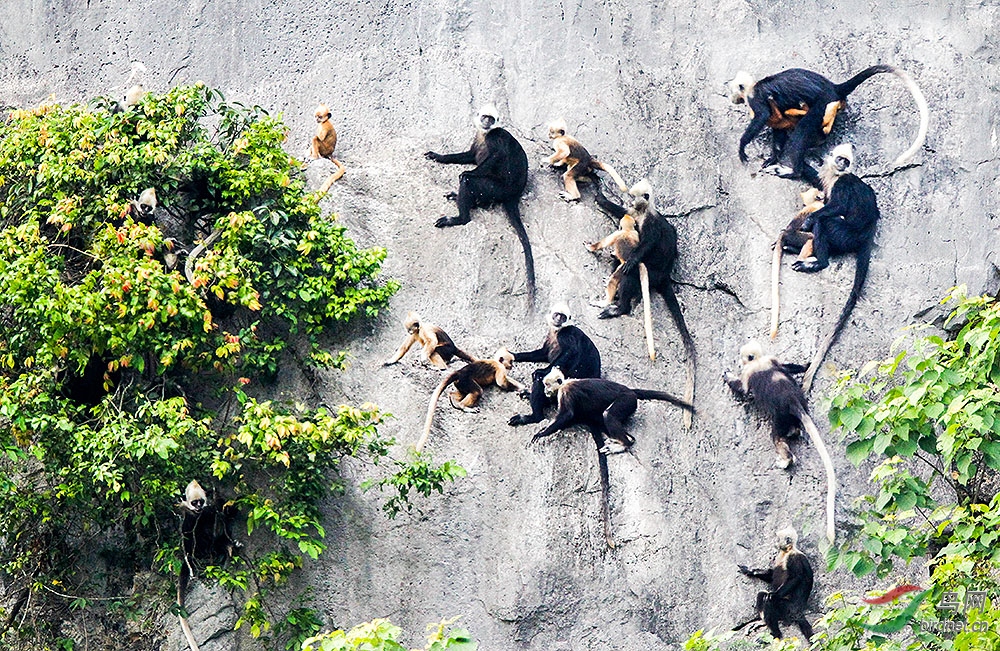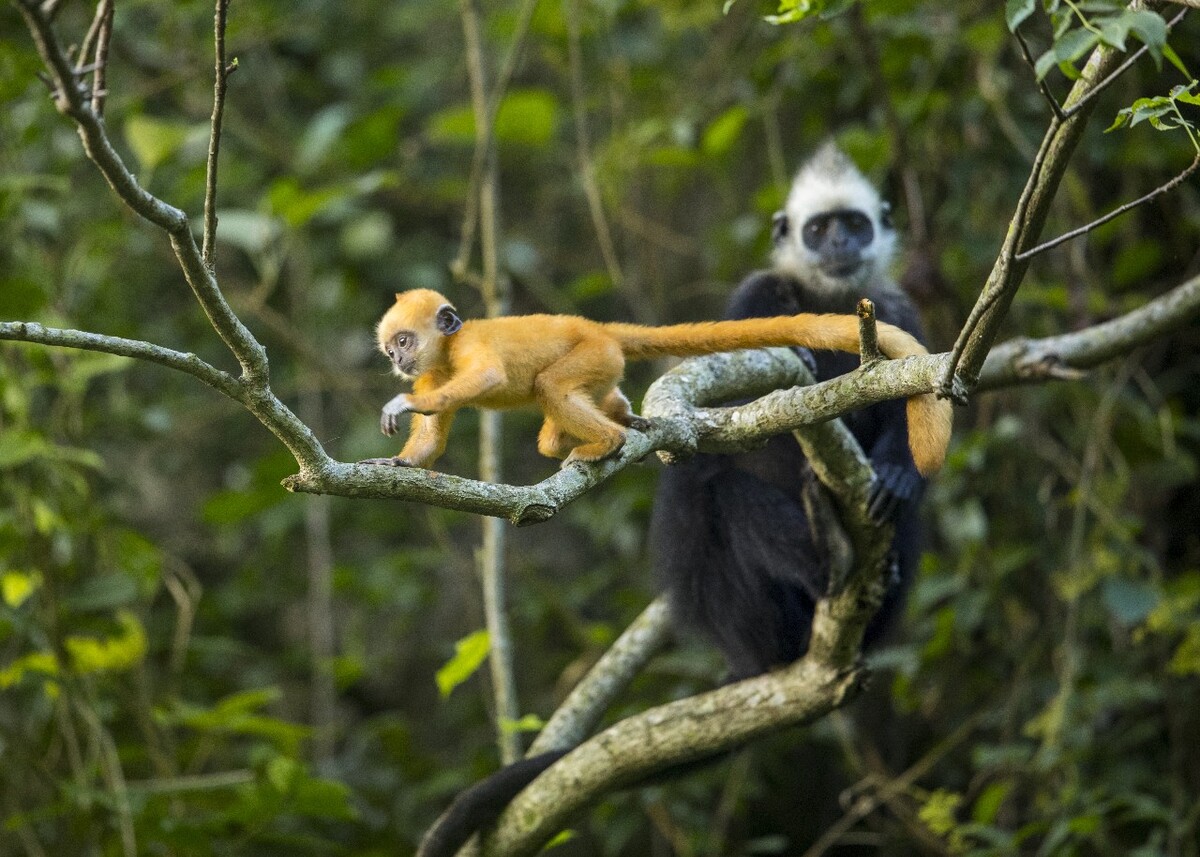飞地经济智库联盟
FAIRTHEWORLD CLUB GROUP美中友好促进会
AMERICAN CHINESE FRIENDSHIP COUNCIL广西白头叶猴 —— 中国与世界建立生态保护投资与合作的可爱小精灵
The white-headed langur (Trachypithecus leucocephalus) is an endangered species of langur native to Guangxi, China. It was once thought to be a subspecies of the Cat Ba Langur (Trachypithecus poliocephalus), now considered native to Vietnam.

- As the common name suggests, a tuft of white fur covers this primate’s head. The hair is lifted straight from the parting for a crazy hairstyle reminiscent of “Is that hair gel? ” scene from the romantic comedy.
-
There’s Something About Mary starring Ben Stiller and Cameron Diaz. (Google it!) Other strands of white hair stuck out wildly from the sides of the head, framing a hairless, dark-hued face characterized by dark eyes, a modest nose, and thin lips.
- The dark ears are wrinkled on either side of the head. White goatee hairs blend into a white ruff, stopped by a thick layer of fur that covers the monkey’s entire body, including its long limbs, in a blackish hue. The fur is long and thick.
- Black fur covers half to three-quarters of the total length of its long tail before giving way to white hairs.
-
The hands are black, and the feet are primarily black with gray accents. Mother Nature’s color palette allows these rare primates to blend into their limestone and karst habitat.
- At birth, white-headed langurs appear to be an entirely different species of monkeys. Mother Nature has covered these babies in a glossy, fluffy, golden-orange fur layer.
- Some wildlife biologists have speculated that this colorful coat helps mothers better track and care for their babies.
- By about a year of age, babies’ coats resemble those of adults, initially turning gray before turning black. The ultimate furry punctuation mark in adulthood is the crazy white hairdo.

- These leaf-eating primates are active during the day (making them diurnal) and most active at dawn and dusk (making them crepuscular).
- White-headed langurs live in groups (called “troops“) of 9-12 individuals. Group size varies with habitat quality.
- At the end of each day, the monkeys leave as a group. Although they choose a large tree as a roost for the night, they prefer crevices or caves.
- White-headed langurs have large salivary glands that break down plant cellulose, lubricate food passage, and moisten the digestive system.
- The characteristic of Old - World Monkeys is that the buttocks of white-headed langurs have thick, calloused pads called “ischial calluses” that provide the monkeys with comfort when seated.

